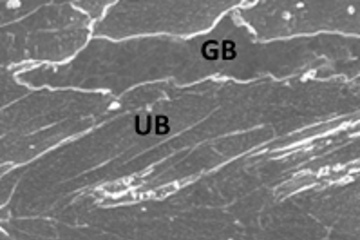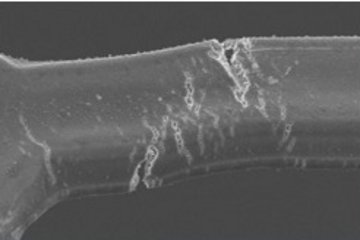All genres
1.
Journal Article
A universal alternating immersion simulator for accelerated cyclic corrosion tests. Marerials and Corrosion 59 (2), pp. 175 - 180 (2008)
2.
Conference Paper
Electrochemical Behaviour of Low Alloy Steels during Atmospheric Corrosion. In: Proceed. Asian Pacific Corr. Contr. Conf. 13, pp. A05 1 - A05 8. (2003)
3.
Conference Paper
Effect of Sulfate and Chloride Ions on Corrosion Potential and Corrosion Rate Transient during Atmospheric Corrosion of Low Alloy Steels. 15, Technical Research Laboratories, pp. 22 - 29 (2002)
4.
Talk
Electrochemical Behaviour of Low Alloy Steels during Atmospheric Corrosion. 13th Asian Pacific Corrosion Control Conference, Osaka, Japan (2003)
5.
Talk
Construction of a cyclic corrosion test simulator. GDCH Jahrestagung 2003, Fachgruppe Angewandte Elektrochemie mit 8. Grundlagensymposium der GDCh, DECHEMA, DBG, München, Germany (2003)
6.
Talk
Effect of Chloride Ion Concentration on Electrochemical Behavior of Low Alloy Steels during Atmospheric Corrosion. 2003 Spring Meeting of the Japan Institute of Metals, Chiba, Japan (2003)
7.
Talk
The Effect of Wet/Dry Repetition on Reactivation/Repassivation Process during Atmospheric Corrosion of Low Alloy Steel. 2002 Fall Meeting of the Japan Institute of Metals, Osaka, Japan (2002)
8.
Talk
Electrochemical Behavior of Low Alloy Steels during Atmospheric Corrosion. 2003 Spring Meeting of the Japan Institute of Metals, Chiba, Japan (2002)
9.
Talk
Electrochemical Studies of Atmospheric Corrosion for Low Alloyed Steels. 53rd Meeting of the International Society of Electrochemistry, Düsseldorf, Deutschland (2002)
10.
Talk
Effect of Sulfate and Chloride Ions on Corrosion Potential and Corrosion Rate Transient during Atmospheric Corrosion of Low Alloy Steels. 15th International Corrosion Congress, Granada, Spanien (2002)
11.
Talk
Behaviour of Low Alloy Steels under Cyclic Corrosion Conditions. 67. AGEF-Seminar, Iserlohn, Deutschland (2001)
12.
Poster
Entwicklung eines universellen Wechseltauchsimulators für die Durchführung beschleunigter, zyklischer Korrosionstests. 76. AGEF Seminar, Düsseldorf, Germany (2003)











